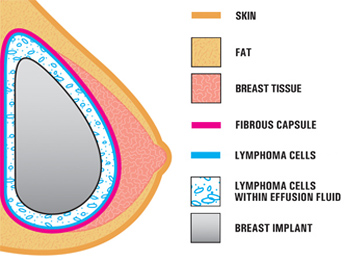The FDA has reported 359 cases of breast implants that caused anaplastic large cell lymphoma (ALCL), a rare type of non-Hodgkin’s lymphoma. Nine of those women have died as of February 1, 2017.
The update comes six years after the World Health Organization first warned about the potential risk. According to the FDA:
Most cases of breast implant-associated ALCL are treated by removal of the implant and the capsule surrounding the implant and some cases have been treated by chemotherapy and radiation.”
Evidence suggests textured breast implants are most likely to cause cancer. There were 231 reports with information on the implant surface. Of these, 203 were textured implants and 28 were smooth.
Recent studies show that textured breast implants are far more likely to develop a bacterial coating (biofilm) in comparison to smooth implants.
All breast implants are contaminated with bacteria during surgery, but the immune system has a much harder time fighting bacteria that can hide in the nooks and crannies of a textured breast implant’s surface.
This can result in a low-level infection or chronic inflammation. The most common complication of inflammation is progressive hardening of the breast tissue around the implant (contracture), which affects anywhere from 10-50% of women with breast implants.
Another complication of chronic inflammation is lymphoma — a cancer that starts in white blood cells called T-lymphocytes (T-cells) that fight infections.
Breast implants are specifically linked to ALCL, a blood cancer that occurs when diseased white blood cells grow uncontrollably. The sick cells crowd out healthy cells and they do not fight infections very well. ALCL grows very quickly and it can be deadly. The symptoms may include:
- Fever
- Fatigue
- Loss of appetite
- Night sweats
- Weight loss
- Swelling in the neck, armpit, or groin
Source: Breast Implants: Update – Breast Implant-Associated Anaplastic Large Cell Lymphoma (BIA-ALCL)


